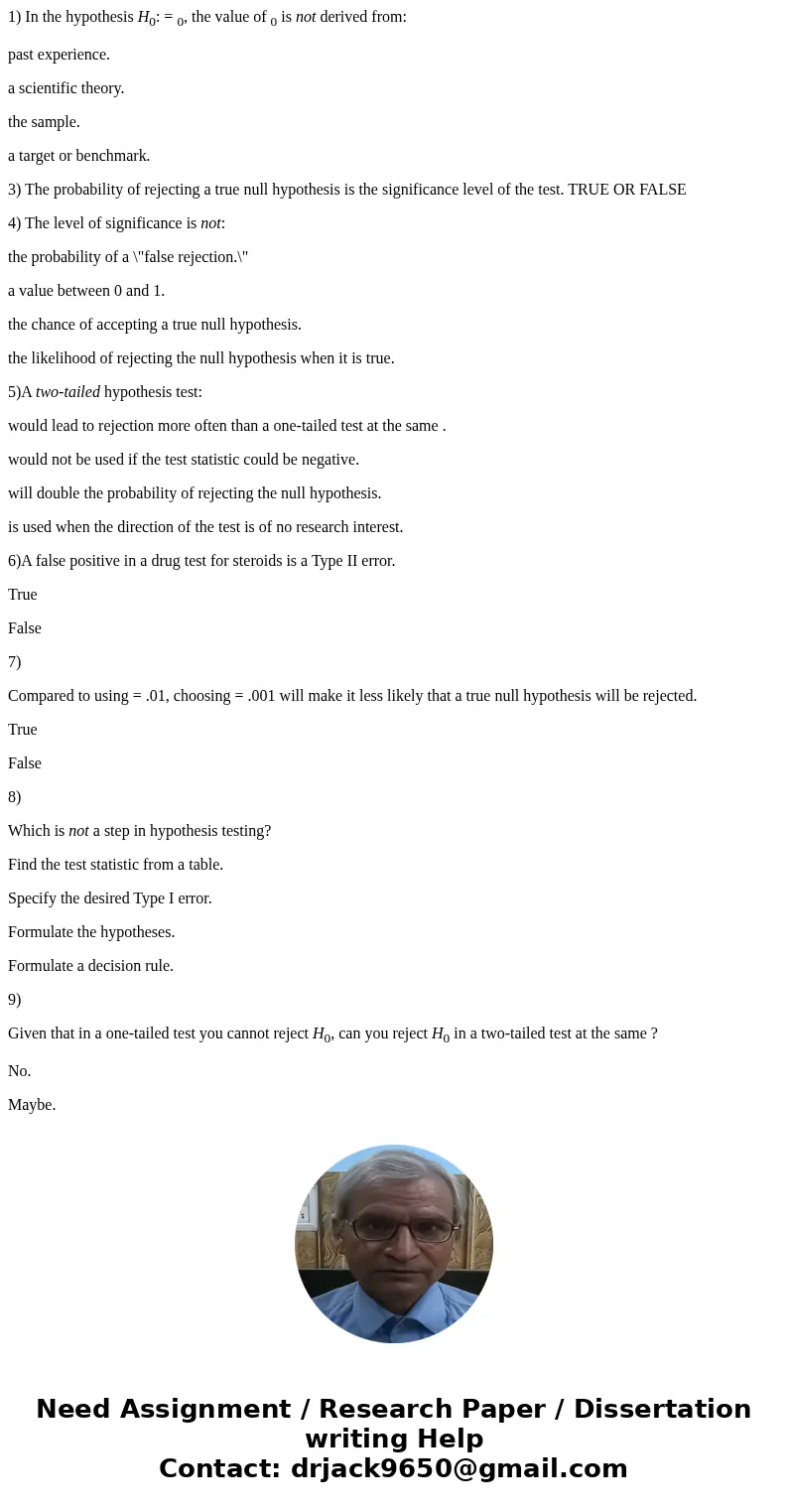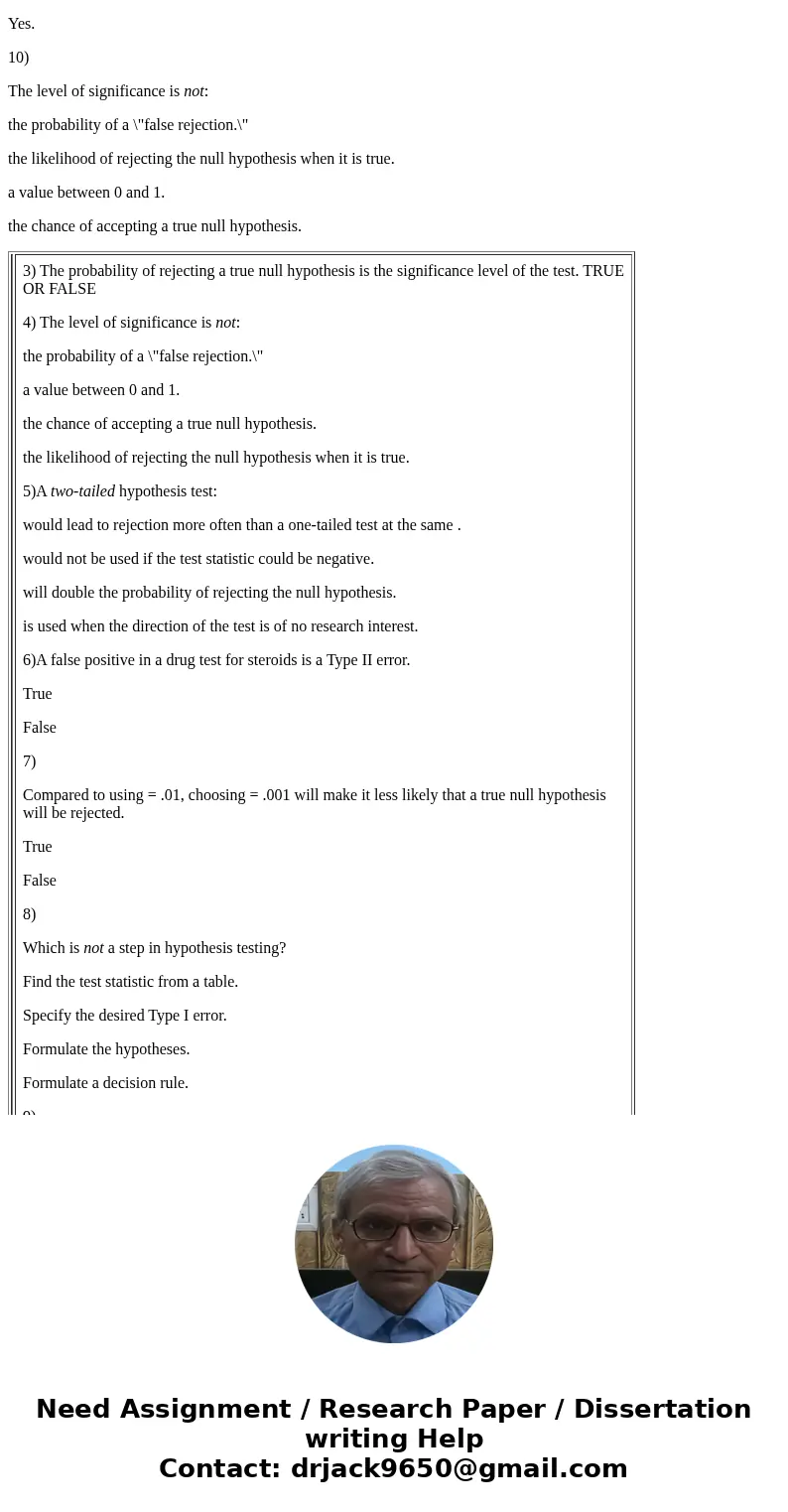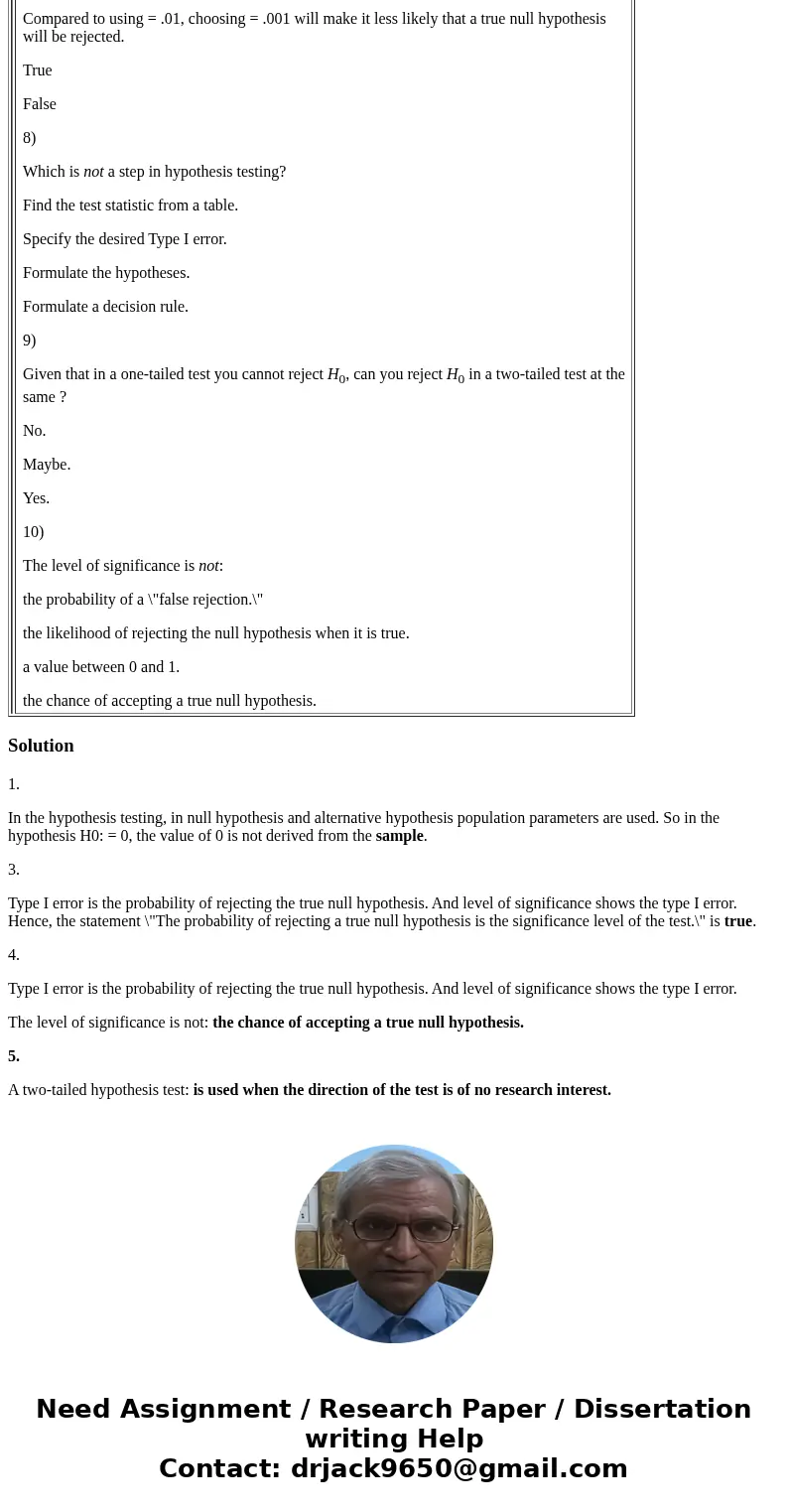1 In the hypothesis H0 0 the value of 0 is not derived from
1) In the hypothesis H0: = 0, the value of 0 is not derived from:
past experience.
a scientific theory.
the sample.
a target or benchmark.
3) The probability of rejecting a true null hypothesis is the significance level of the test. TRUE OR FALSE
4) The level of significance is not:
the probability of a \"false rejection.\"
a value between 0 and 1.
the chance of accepting a true null hypothesis.
the likelihood of rejecting the null hypothesis when it is true.
5)A two-tailed hypothesis test:
would lead to rejection more often than a one-tailed test at the same .
would not be used if the test statistic could be negative.
will double the probability of rejecting the null hypothesis.
is used when the direction of the test is of no research interest.
6)A false positive in a drug test for steroids is a Type II error.
True
False
7)
Compared to using = .01, choosing = .001 will make it less likely that a true null hypothesis will be rejected.
True
False
8)
Which is not a step in hypothesis testing?
Find the test statistic from a table.
Specify the desired Type I error.
Formulate the hypotheses.
Formulate a decision rule.
9)
Given that in a one-tailed test you cannot reject H0, can you reject H0 in a two-tailed test at the same ?
No.
Maybe.
Yes.
10)
The level of significance is not:
the probability of a \"false rejection.\"
the likelihood of rejecting the null hypothesis when it is true.
a value between 0 and 1.
the chance of accepting a true null hypothesis.
|
Solution
1.
In the hypothesis testing, in null hypothesis and alternative hypothesis population parameters are used. So in the hypothesis H0: = 0, the value of 0 is not derived from the sample.
3.
Type I error is the probability of rejecting the true null hypothesis. And level of significance shows the type I error. Hence, the statement \"The probability of rejecting a true null hypothesis is the significance level of the test.\" is true.
4.
Type I error is the probability of rejecting the true null hypothesis. And level of significance shows the type I error.
The level of significance is not: the chance of accepting a true null hypothesis.
5.
A two-tailed hypothesis test: is used when the direction of the test is of no research interest.



 Homework Sourse
Homework Sourse